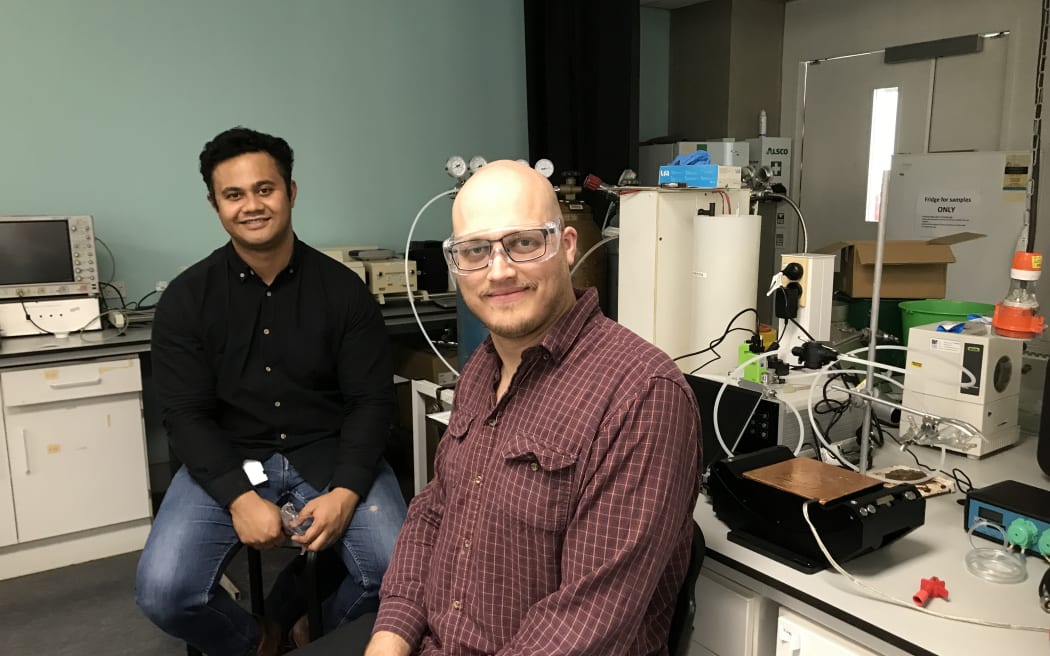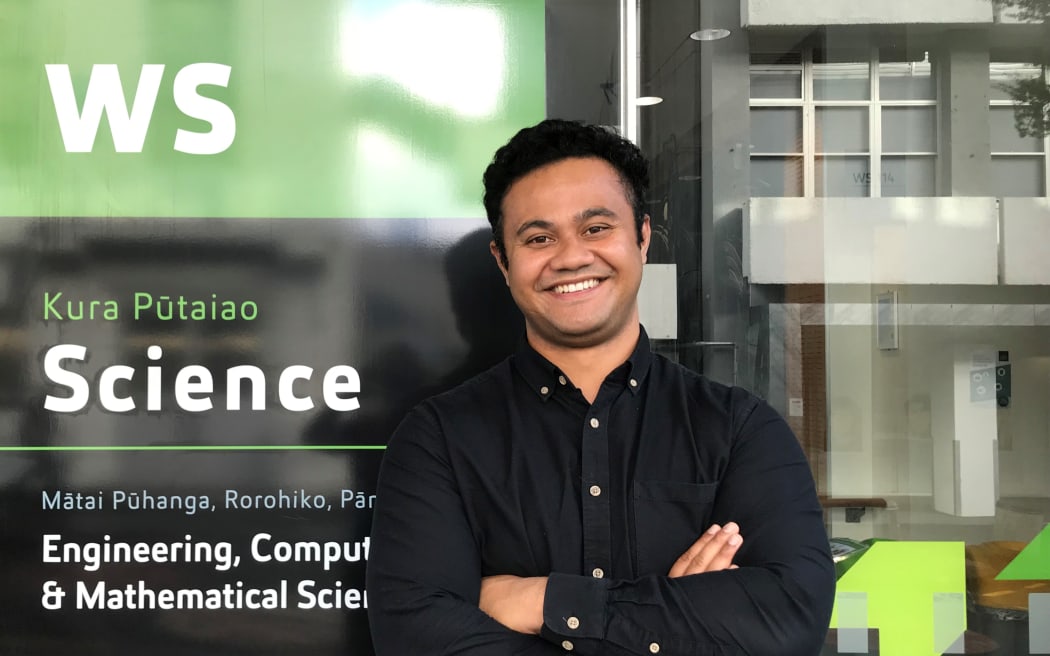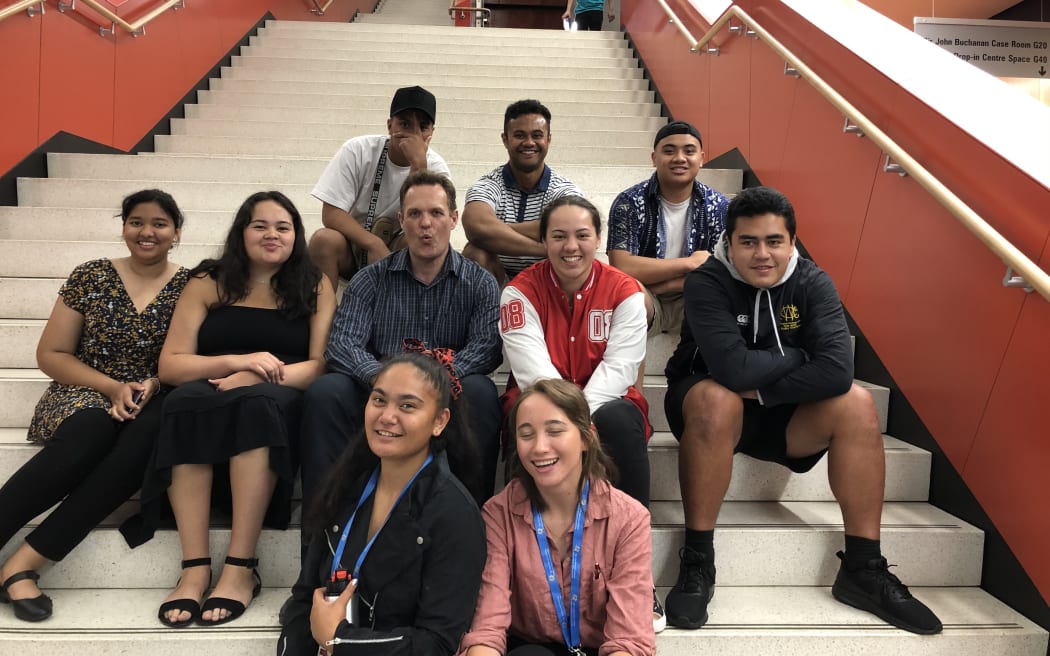Solid, liquid, gas, and plasma.
The fourth state of matter, plasma, makes up 99.9% of the known visible universe. Stars, lightning, our upper atmosphere: all made of plasma. And increasingly, scientists are figuring out how to harness the power of plasma for many different applications.

Dr Taniela Lolohea and PhD student Daniel Carlton. Photo: RNZ/Claire Concannon
Follow Our Changing World on Apple Podcasts, Spotify, Stitcher, iHeartRADIO, Google Podcasts, RadioPublic or wherever you listen to your podcasts.
Plasma is ionised gas – that is, gas that contains charged particles. It is the often-unseen factor in many manufacturing and processing steps of the goods that we buy and use, like our TVs, cellphones and computers. About one third of the steps involved in making microchips, for example, are plasma based.
Plasma etching, plasma welding, plasma bonding and cross-linking, using plasma to clean surfaces, or make them sticky, or sterilise them. The list of all the things we use plasma for goes on and on.
At the Auckland University of Technology, chemistry lecturer Dr Taniela Lolohea is focused on how plasma jet technology can be used to add thin, high quality, specific purpose coatings.

Dr Taniela Lolohea. Photo: RNZ/Claire Concannon
‘Traditional’ plasma technology involves heating a gas up to 100s or 1000s of degrees Celsius to create and maintain the plasma while it is being used for the coating, etching, bonding or other process. As a result, there are limitations in its use for adding surface coatings – for example, using something that been heated to a thousand degrees on plastic or certain textiles is just not going to work. Lolohea's research harnesses a recent development in this area which means that plasma can now be created and used at the relatively low temperatures of 25–60℃.
This opens a world of opportunity that Lolohea is keen to explore. Working with collaborators he is problem-solving different surface coating needs – whether that is a coating that is thick, thin, porous, dense, antimicrobial, or needs to contain intact biological structures like proteins.
Lolohea has a second area of investigation too. Motivated by his own experiences, he is interested in developing Pacific-knowledge-system-based projects that might encourage Pacific students to stick with science all the way from high school to a career.

Dr Taniela Lolohea with high school students at the MacDiarmid Discovery Camp. Photo: Supplied
He discusses his experiences, current research, and his hope for the future for Pacific students in science with Claire in this episode.
Dr Taniela Lolohea works with collaborators Professor Duncan McGillivray and Professor David Williams of the University of Auckland and with Space Foundry Inc. He is an Associate Investigator at the MacDiarmid Institute for Advanced Materials and Nanotechnology. His work investigating projects to engage Pasifika students in science is supported by Ako Aotearoa.
To learn more:
-
The recent paper discussed in this episode is ‘Seen but unheard: navigating turbulent waters as Māori and Pacific postgraduate students in STEM’ it was published by the Journal of the Royal Society of New Zealand, and has been discussed in recent articles and interviews.
-
The 2017 analysis of Ministry of Education data on numbers of Pasifika academics and deans is reported in ‘Why isn’t my professor Pasifika?’
-
Science Learning Hub have an article that goes into detail about the plasma spraying process.


